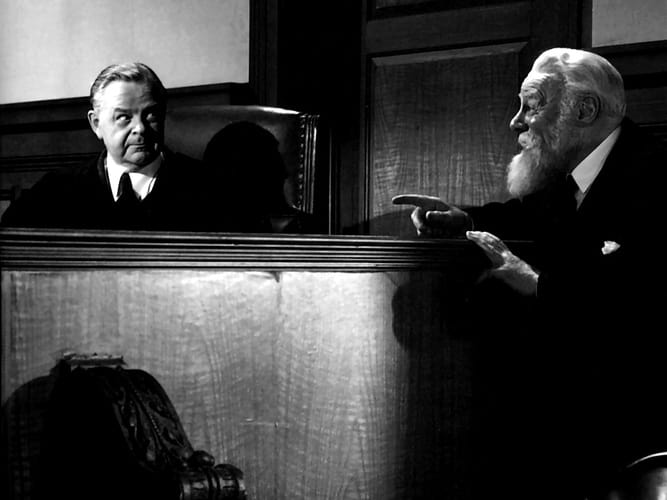Nothing says Christmas quite like the classics. With each Christmas season resulting in an influx of holiday-themed titles, very few modern Christmas flicks are destined for the same level of popularity as the seasonal favourites of old. One much-loved and highly-regarded Yuletide picture is the 1947 masterpiece Miracle on 34th Street. Although audiences now consider the picture one of the best Christmas films in history, its success was highly unlikely. Indeed, 20th Century Fox's studio head disliked the film, choosing to release it in May while keeping the Christmas setting a secret in marketing materials. Additionally, writer-director George Seaton's screenplay takes subtle jabs at festive commercialism, and the story deals with law and politics. But Miracle on 34th Street found its audience, receiving critical acclaim and Academy Awards. Bolstered by a winning combination of warm, sincere performances, magical moments, and clever scripting, Miracle on 34th Street is an annual holiday viewing tradition in many households for good reason. Children will find it a rewarding fantasy about the existence of Santa, while the picture will reward older, more mature viewers with an intelligence lacking in mainstream Christmas films.

As the film begins, the Macy's Thanksgiving Day Parade in New York City is about to occur. When a kind old man named Kris (Edmund Gwenn) discovers that the parade's Santa Claus is intoxicated, he promptly informs the organiser, Doris Walker (Maureen O'Hara). Realising that Kris resembles Santa to a striking degree, she persuades him to jump in as the parade's replacement Father Christmas. With Kris doing a remarkable job during the parade, Macy's hires him as their Santa for the Christmas period, and he is a huge hit: he is wonderful with children and is full of Christmas spirit. Doris's daughter, Susan (Natalie Wood), witnesses Kris in action and believes he is the real Santa Claus. However, Doris is raising Susan to not believe in fairytales, and she hopes that Kris will inform her daughter that Father Christmas is not real. To her dismay, Kris instead insists that he truly is Santa Claus. Kris's ostensibly ridiculous claim is immediately challenged, leading to a courtroom battle where the judge (Gene Lockhart) will determine Kris's sanity. In court, Kris is represented by Doris's neighbour, Fred Gailey (John Payne).
Without any flying reindeer, magical sleighs, elves, or acts of magic, Miracle on 34th Street is a distinct Christmas offering that takes place in reality but contains fantastical undertones. Seaton keeps the picture cleverly ambiguous, as nobody ever definitively declares Kris to be the real Santa Claus, nor does the movie prove that Santa exists. Just as Doris and Susan gain faith in the unprovable, so does the audience. With the feature presenting evidence for and against the notion that Kris is Santa, it is up to individual viewers to believe and interpret the ending however they wish. Furthermore, similar to other Christmas films from the 1940s (It's a Wonderful Life, The Shop Around the Corner, or The Bishop's Wife), Miracle on 34th Street captures a time of sheltered innocence when a trip to the department store involved dressing in your best clothes, and parents could trust strangers to look after their children. The film feels like a charming nostalgic dream beset with delightful moments, including Kris singing Sinterklaas Kapoentje with a little Dutch girl, Thelma Ritter in her first film role as a frustrated mother who experiences Kris's selfless goodwill, and the United States Postal Service delivering all the undelivered Santa letters on Kris in court.

George Seaton started as a radio actor (he played the Lone Ranger in 1933 broadcasts) before moving into screenwriting during the 1930s and making his directorial debut with 1945's Diamond Horseshoe. Although Miracle on 34th Street was one of his earliest directorial undertakings, he displays a robust sense of craftsmanship and keeps the narrative engaging despite the picture mostly amounting to dialogue. The film is also notable for its use of authentic locations, which was an innovative approach at a time when motion pictures were filmed almost exclusively on soundstages. Seaton even filmed scenes with his actors during the real Macy's Thanksgiving Day Parade, using nine cameras and only recording each scene once. The director filmed other scenes inside an actual Macy's department store with real workers and customers in the background. Such techniques are highly effective and heighten the sense of authenticity.
Although the cinematography is understandably basic and lacks dynamism, Seaton coaxes exceptional performances from the actors, which is one of the production's biggest assets. Edward Gwenn's Oscar-winning performance as Kris Kringle is wonderfully endearing. He is the type of person who makes you immediately smile when you are in their presence, rendering him the perfect big-screen Santa Claus. Instead of playing the role with an exaggerated, booming voice, Gwenn portrays the jolly fat man as the nuanced embodiment of goodwill and kind-heartedness. Best of all, you cannot help but love him regardless of whether you believe he truly is Father Christmas or not. Further additions to the cast include the captivating Maureen O'Hara and the precocious young Natalie Wood, who's an utter joy as Susan.

It may not reach the dizzying heights of It's a Wonderful Life, but Miracle on 34th Street is a shrewd, immensely enjoyable festive fable that carefully hedges its bets in playing the line between reality and fantasy. The picture refuses to get mushy on us, with the sentiment feeling earned and genuine instead of forced. Seaton astutely blends tender drama, sly humour (this is a very funny movie at times), and a knowing, biting commentary on the commercialism of Christmas that grows more relevant with each passing year. Indeed, one must wonder what Kris would think about the state of Christmas commercialism in the 21st Century. Miracle on 34th Street also embodies the holiday spirit, which is more about kindness, humanity and decency.
9.2/10
 Login
Login